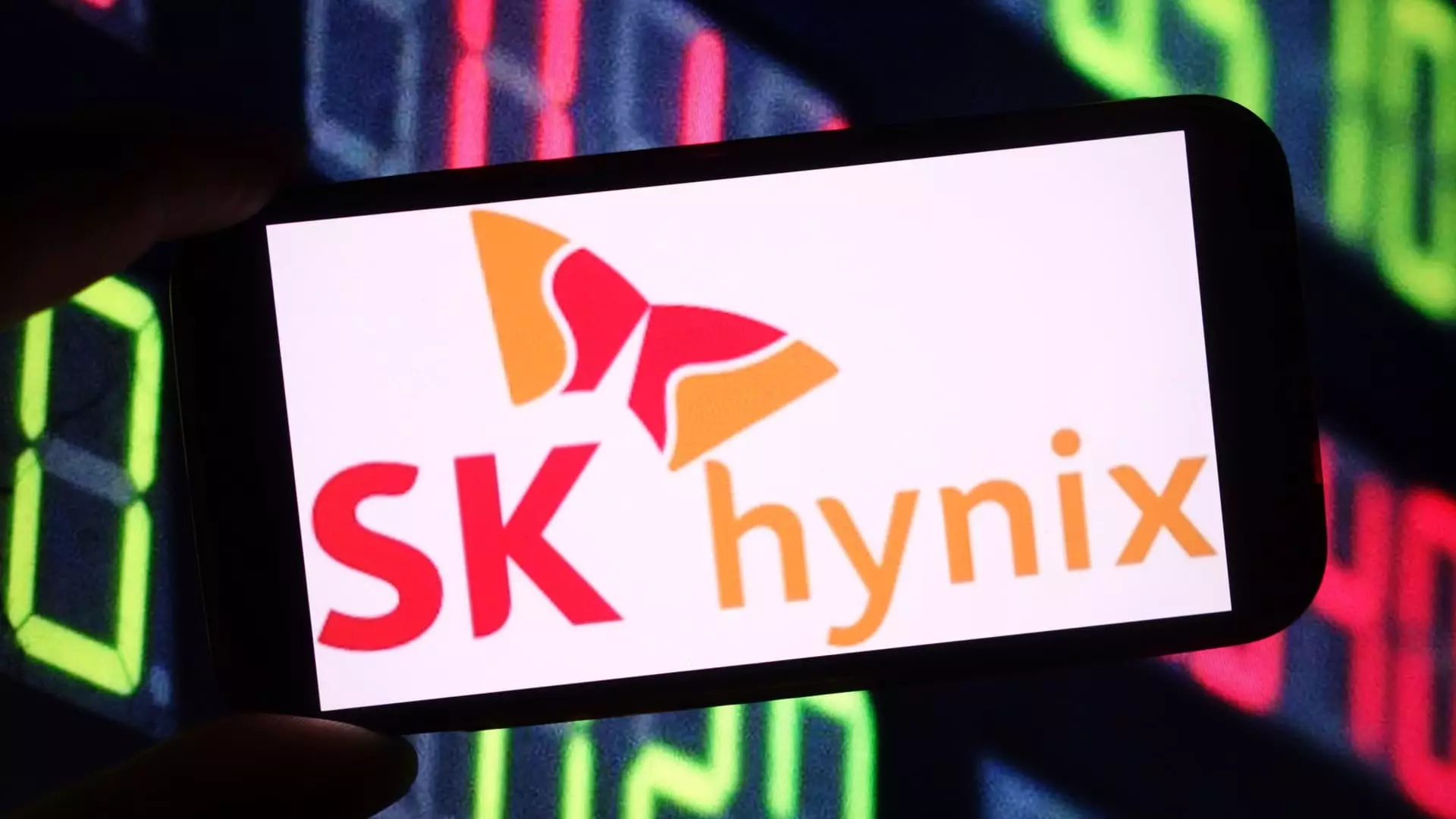South Korea’s SK Hynix has recently reported impressive quarterly results, surpassing expert predictions for both revenue and operating profit. The tech giant generated 17.64 trillion won (approximately $12.36 billion) in revenue, outperforming the anticipated 17.26 trillion won. Its operating profit reached 7.44 trillion won, considerably exceeding the forecast of 6.62 trillion won. These figures highlight an astounding growth trajectory; revenue soared by about 42% year-over-year, while operating profit surged by a remarkable 158%. However, a closer look reveals that compared to the preceding quarter, there was an 11% dip in revenue and an 8% decline in operating profit from its record peak in December. This paradox of exceptional year-over-year growth combined with quarter-over-quarter regression speaks volumes about the volatility in the tech market.
The Artificial Intelligence Surge
Fundamentally, the epicenter of this remarkable financial performance can be traced back to the increasing demand for high bandwidth memory (HBM), pivotal in artificial intelligence (AI) chipsets. Across the board, global demand for HBM is being propelled not only by established tech behemoths but also by innovative startups that are racing to incorporate AI capabilities into their products. In a candid earnings call, SK Hynix executives noted that while a range of macroeconomic uncertainties—including U.S. tariff policies—pose potential risks, they do not anticipate a major impact on the burgeoning demand for AI server-related products. In a market morphing with technological evolution, this forward-looking sentiment reflects a broader optimism in the continued growth and evolution of AI technology.
Tariff Uncertainty and Market Dynamics
Despite its positive outlook, the company remains cautious about external economic factors that could disrupt its progress. The SK Hynix management has expressed concerns about potential tariff implications in the semiconductor industry. “While reciprocal tariff measures between some countries are currently suspended, there are growing concerns that tariff can be applied to semiconductor products,” an executive pointed out. This acknowledgment illustrates the precarious nature of international trade dynamics and the potential for sudden shifts in market conditions. As such, investors and stakeholders should remain vigilant regarding these developments, especially considering how tariffs could trigger cascading effects throughout the tech supply chain.
AI: The Future of Consumer Electronics
Adding a layer of optimism for the remainder of the year, SK Hynix anticipates demand spikes in consumer electronics like PCs and smartphones, buoyed by the rollout of new products boasting AI functionalities. The company has poignantly emphasized how its first-quarter profits underscore AI’s transformative impact on the memory market. The synergy between advances in AI and the resulting appetite for high-performance memory solutions is not merely a passing phase; it’s indicative of a seismic shift toward AI-driven technology across various consumer touchpoints. “With development costs decreasing, initiatives for AI development have surged, which has led to a sharp increase in demand,” an executive noted, hinting at the wider implications for innovative AI applications.
A Dominant Player in High Bandwidth Memory
In terms of market positioning, SK Hynix has firmly entrenched itself as a dominant player in the HBM landscape, with a commanding 70% revenue share as highlighted in a report from Counterpoint Research. It is critical to note that the company isn’t operating in isolation; its primary competitors include industry stalwarts like Micron Technology and Samsung Electronics. Nonetheless, the gravity of its partnership with awe-inspiring entities such as Nvidia—one of the front-runners in AI technology—solidifies SK Hynix’s role as a key supplier of HBM. Such collaborations are pivotal in amplifying its growth, positioning the company at the forefront of the ongoing AI revolution.
Overall, SK Hynix’s recent stellar performance is a testament to the dynamic landscape of memory technology and the promising horizon of artificial intelligence. It is an artful dance of innovation and adaptation that is not just reshaping the market but also redefining the future of technology itself. The company stands poised to leverage its strengths in the face of uncertainties, an encouraging sign for stakeholders as they navigate the complexities of an evolving market.


Leave a Reply